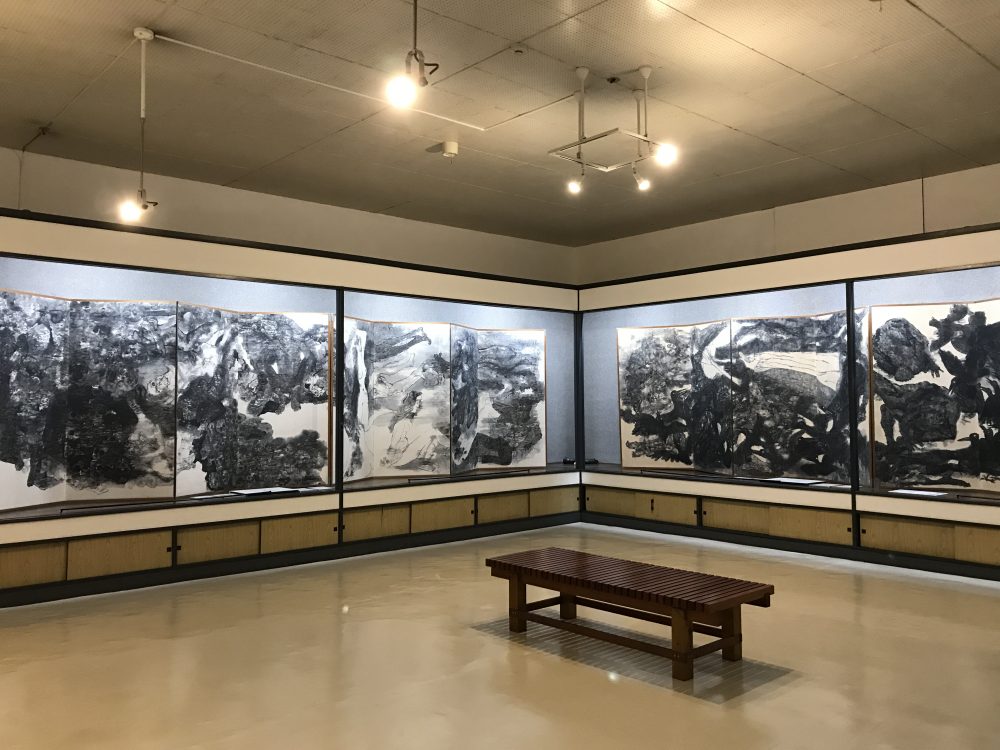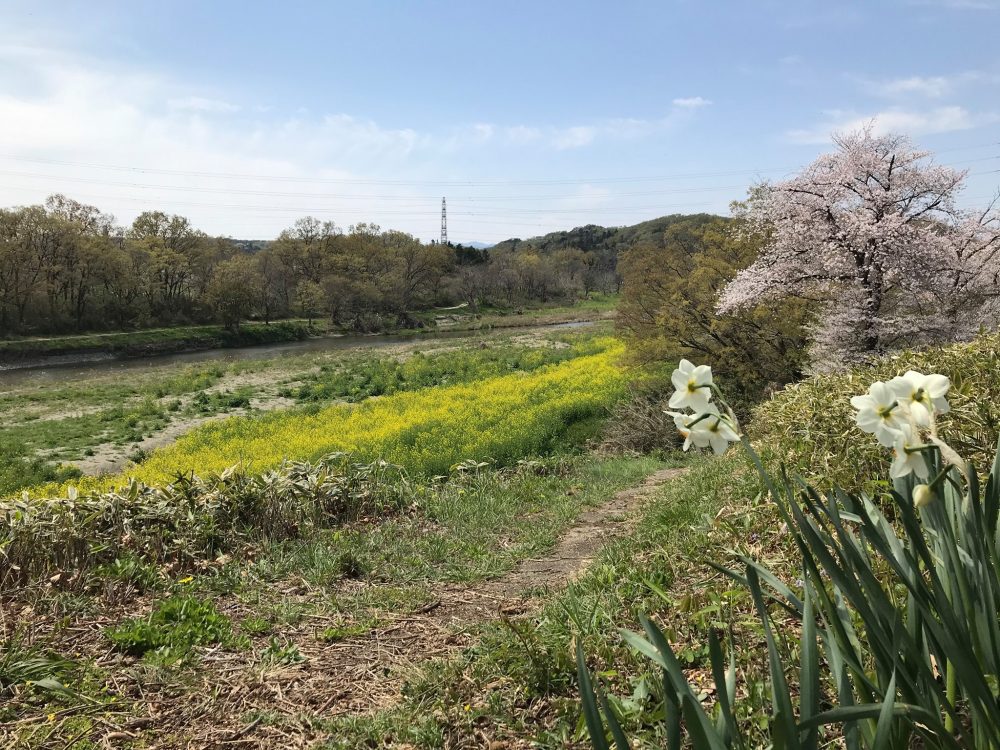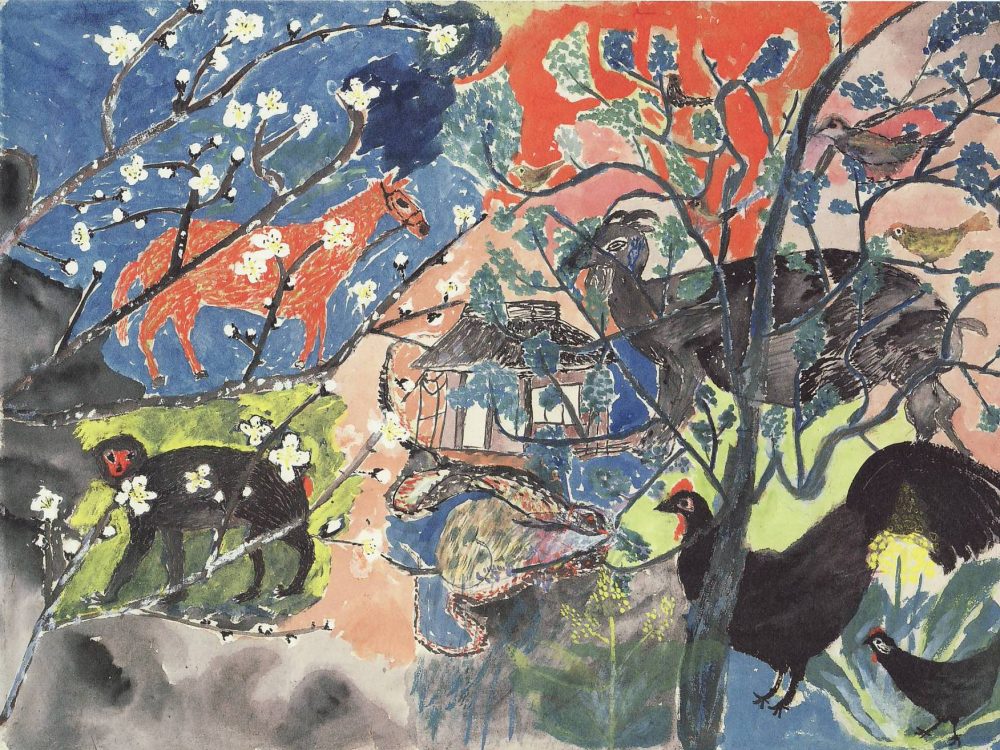[Essay] Maruki Gallery & Culture in a Time of Pandemic
Culture in a Time of Pandemic
Maruki Gallery for the Hiroshima Panels Reopens
Connecting With People For A Better Future
* Translation of an article in Tokyo Shimbun (Newspaper) published on June 9, 2020

I stood in the empty gallery gazing at the ‘Hiroshima Panels’.
The Maruki Gallery for the Hiroshima Panels is located in Higashi-Matsuyama City, Saitama Prefecture. This art gallery was created by Iri and Toshi Maruki to exhibit their works, ‘The Hiroshima Panels.’
May 5th marked the fifty-third anniversary of the opening of the gallery. On this day every year, vendors open up booths and an event and concert are held. Many visitors gather to celebrate. But this year, it was quiet. Nature shone verdantly and all that could be heard was the echo of chirping birds.
In response to the COVID-19 pandemic, the gallery closed its doors to the public on April 9th. Maruki Gallery does not receive funding from the government or any corporations. Since its doors opened, the gallery has maintained its independence through funding provided by admission fees and generous donations from the public. For this reason, there was no call from the government to closed our doors; we had to make this decision for ourselves.

After the Great East Japan Earthquake and the Fukushima Nuclear Disaster which took place in the spring nine years ago, Maruki Gallery’s doors remained open. The gallery’s skylights provided natural lighting during the planned blackouts that took place at the time. As Toshi Maruki once said, “even if for just one person a day,” Our gallery’s policy is that our doors remain open as long as there are people out there who want to see the works of art within. Nine years ago, there were people who wanted to see the Hiroshima Panels in light of the events that took place that year. The gallery remained open for those people.
However, circumstances differed this time. By keeping our doors open, we could potentially contribute to the spread of the virus. In order to keep with our values as a museum that cherishes and recognizes the importance of life, we had to make the difficult decision to close our doors. Having no income would bring about difficult times, but even if our doors remained open, it would not change the financial difficulties we would be facing. This decision to close our doors, albeit temporarily, was not a decision we made lightly. It would mean closing the doors on a place that has for so long been protected by those that see the value in the art of the Marukis.
After the earthquake and the Fukushima nuclear disaster nine years ago, we faced the harsh reality of the limits of scientific technology. This current pandemic has shown us that there are limits to what can be done with modern medicine. But if we look back upon history, mankind has continued to suffer from war and epidemics since ancient times. We should not assume that tomorrow will be as tranquil as today. Yet somehow it seems we have managed to forget this fact and take so much for granted.
We’ve heard the words “non-essential” and “non-urgent” being used many times during this period of self-isolation. But culture is not just something that emerges at the apex of an era. No matter the hardships mankind faced in the past, we never gave up our will to express. The arts play a vital role as a method of recording the state of the world. Art has helped to memorialize everything from insufferable pain to the discerning eye of society.

Even while our gallery was temporarily closed, we saw that there was hope. Younger members of our gallery provided us with a way to receive emergency aid by calling for donations using an online platform. We received donations from people of all ages and from people in and outside of Japan. While we felt conflicted in receiving aid from others in a time that is trying for everyone, we were encouraged by the voices of our supporters. They reminded us that while they are unable to visit the gallery, they still understand the importance of continuing to protect the works of art.
I can’t help but feel dismay at the rotting political system, and chauvinism has continued to grow each year. While we are still currently dealing with the effects of the nuclear disaster, we now also face frequent typhoons and extreme heat waves. It has become harder and harder to distinguish between natural and man-made disasters.
‘The Hiroshima Panels’ are a series of artworks depicting the tragedy of the atomic bombing that took place seventy-five years ago. At a time when media censorship prevailed, these panels traveled around the country, enlightening people with the truth; a truth that had been hidden from the public. The meaning of these works of art change, just as times have changed. The artworks themselves have not changed, but the values of those who see the artwork and their interpretations change with time.
The invisible threat which was depicted within ’The Hiroshima Panels’ was more relevant than ever after 3.11. Perhaps revisiting ‘The Hiroshima Panels’ during a time when a pandemic sweeps our globe will shed a different light on the artwork. Maruki Gallery has provided a communal space for people to connect with one another, the importance of which we have been reminded of. We’ve been given an opportunity to reevaluate the role the gallery plays so that we can pass the baton on to future generations.

The doors of the Maruki Gallery reopened on June 9th. What will we take away from viewing ‘The Hiroshima Panels’ once again? The gallery is also home to the works of Suma Maruki, mother of Iri Maruki who began painting in her seventies. What will her paintings, so full of the joy of life, teach us?
Yukinori OKAMURA (Curator and Managing Director, Maruki Gallery for the Hiroshima Panels)
Visit our fundraising project page “Create Virtual Tours to Share the Hiroshima Panels” on GlobalGiving.
